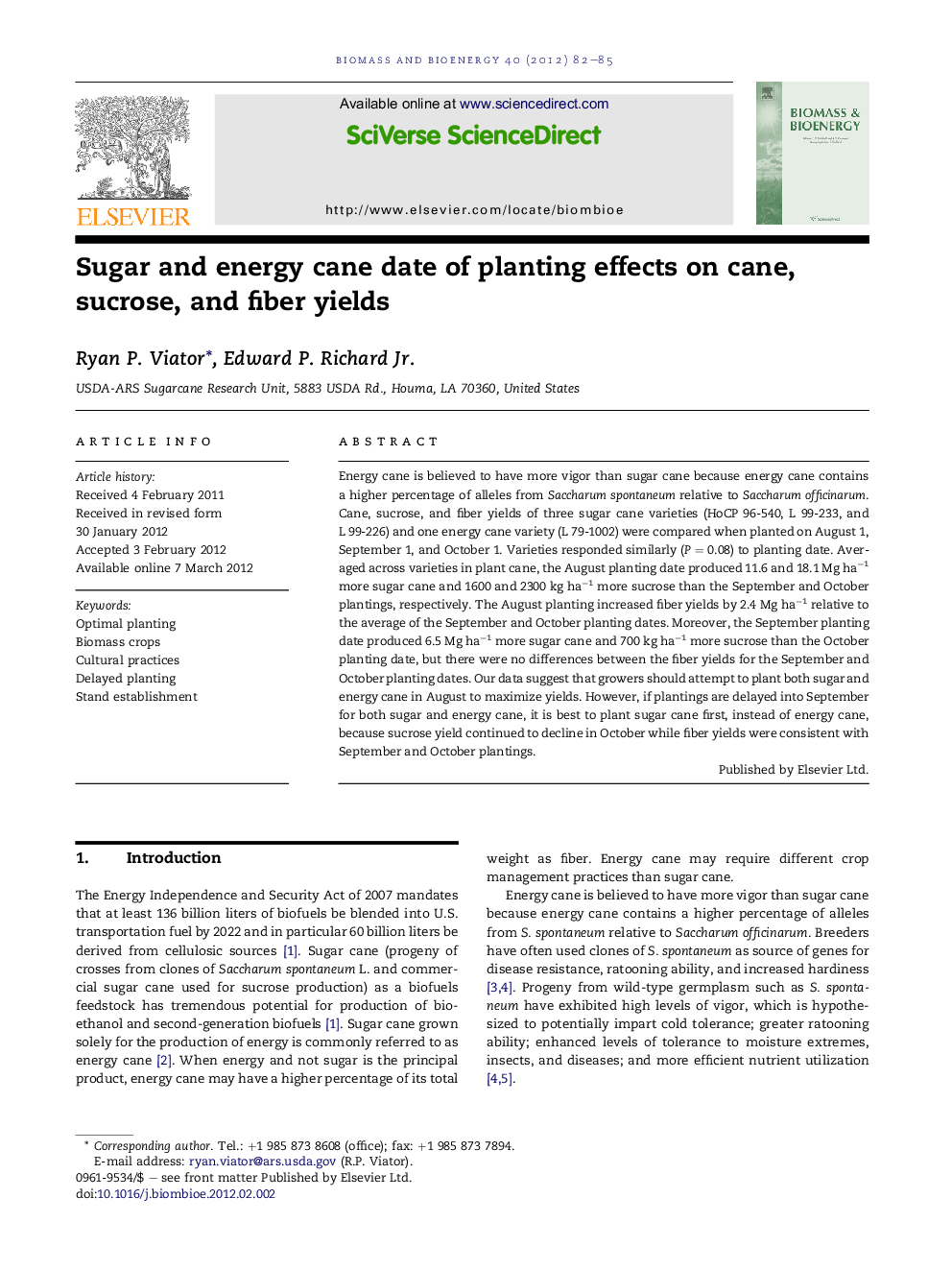| Article ID | Journal | Published Year | Pages | File Type |
|---|---|---|---|---|
| 677462 | Biomass and Bioenergy | 2012 | 4 Pages |
Energy cane is believed to have more vigor than sugar cane because energy cane contains a higher percentage of alleles from Saccharum spontaneum relative to Saccharum officinarum. Cane, sucrose, and fiber yields of three sugar cane varieties (HoCP 96-540, L 99-233, and L 99-226) and one energy cane variety (L 79-1002) were compared when planted on August 1, September 1, and October 1. Varieties responded similarly (P = 0.08) to planting date. Averaged across varieties in plant cane, the August planting date produced 11.6 and 18.1 Mg ha−1 more sugar cane and 1600 and 2300 kg ha−1 more sucrose than the September and October plantings, respectively. The August planting increased fiber yields by 2.4 Mg ha−1 relative to the average of the September and October planting dates. Moreover, the September planting date produced 6.5 Mg ha−1 more sugar cane and 700 kg ha−1 more sucrose than the October planting date, but there were no differences between the fiber yields for the September and October planting dates. Our data suggest that growers should attempt to plant both sugar and energy cane in August to maximize yields. However, if plantings are delayed into September for both sugar and energy cane, it is best to plant sugar cane first, instead of energy cane, because sucrose yield continued to decline in October while fiber yields were consistent with September and October plantings.
► Three sugar cane varieties and one energy cane variety are compared at three planting dates. ► All varieties (both sugar and energy cane) respond similarly to planting dates. ► Sucrose yield continues to decline with an October planting. ► Dry biomass yields are consistent with September and October plantings.
